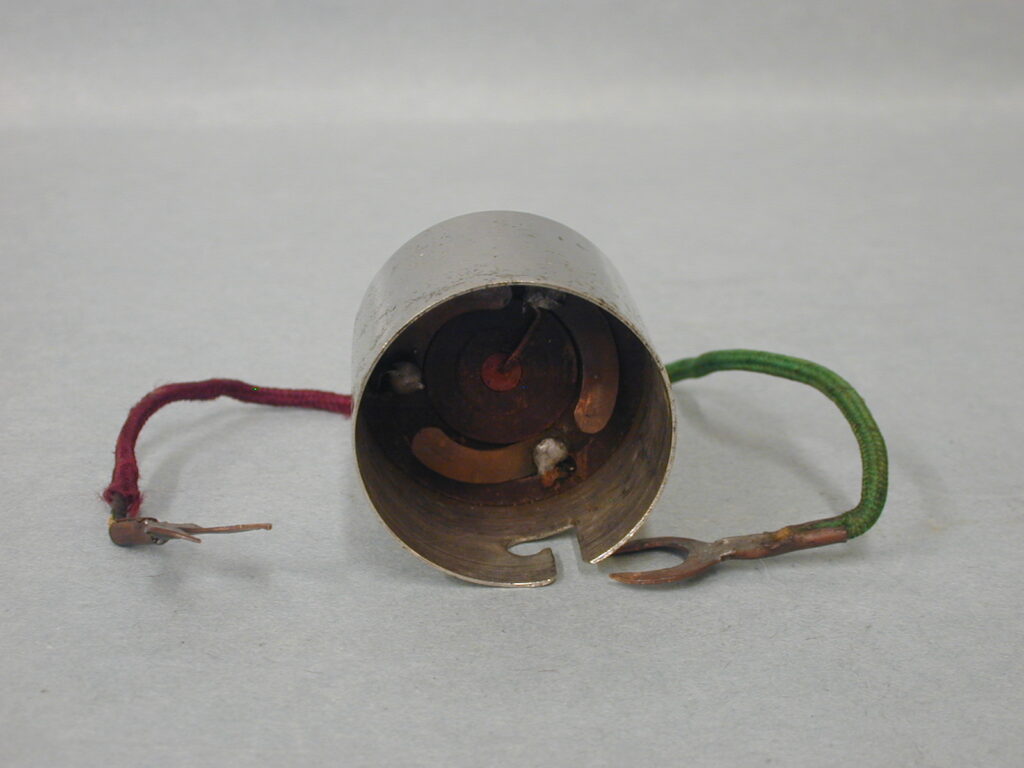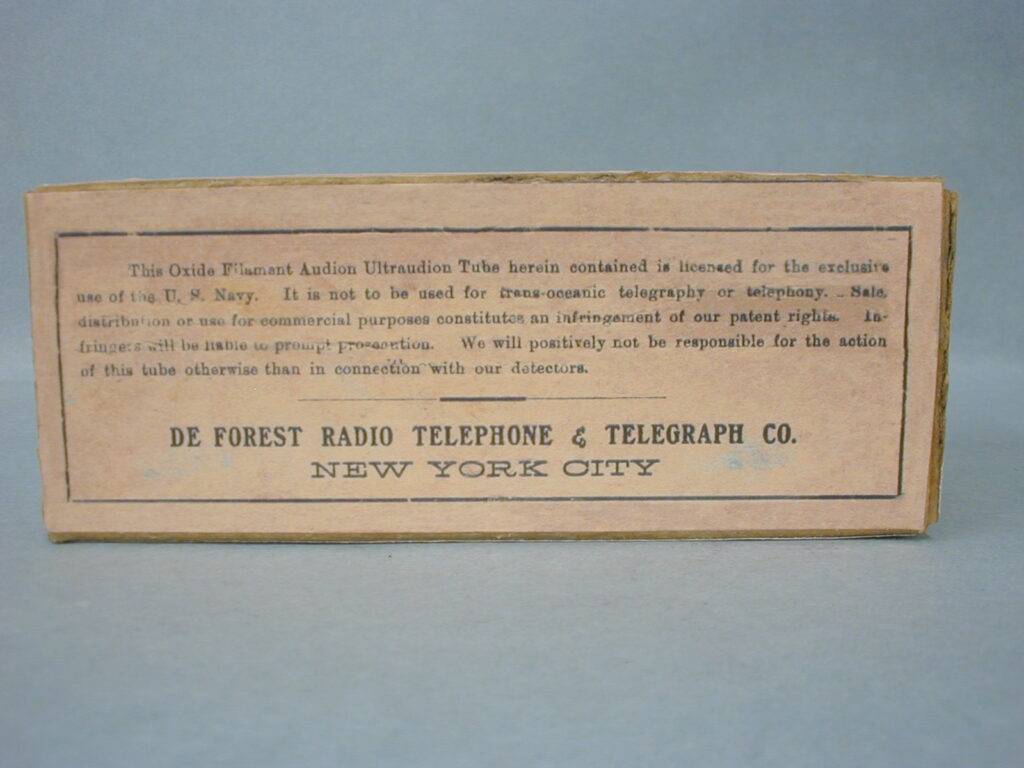







Figs.1, and 2 show the CF 185 detector tube with the US Navy 3- point base. The side pin and one of the bottom pins are the filament connections. These were made by DeForest for Navy use starting in Nov., 1916 as can be seen in the document on the left below. Etched on the glass in a square box it states: “DO NOT EXCEED .85 amps, DEFOREST, TYPE CF 185”. Inked on the press is 6L172. The plates are made of what appears to be tungsten along with the grid but this is just a guess. The grid, filament, and upper plates are supported by a double set of glass arbors. These glass arbors made the CF 185 quite fragile and for the most part un-suitable for the use of the Navy. An oxide coated tungsten filament is stated on the box, and also states it is an ultraudian. The document below in fig. 9 has a bit more information as well.
Figs. 3, and 4 show the available DeForest nickel plated adapter for use in other equipment made by same that required a candelabra hook-up.
Figs. 5-8 have all 4 sides of the box with all its warnings and info.


Fig. 9. An article appeared in the Nov., 1916 QST magazine that gives a fairly complete explanation of the new DeForest CF 185 tube. The right picture, bottom half, includes the chrome adapter for use in other equipment made by DeForest and others.
Fig. 10. The document shown was compiled by George Clark in a law suit brought by Marconi WT Co. of America VS. DeForest Radio Telephone and Telegraph Co. The top 1/3 shows sales of oxide filament bulbs (CF 185) sold by DeForest to various branches of the US military in the years 1916-1918.
Of course, the CF stands for Commerical/DeForest in the George Clark compiled US Navy numbering system.
Sources:
Tyne, Gerald, “Saga of the Vacuum Tube” 1`977
QST magazine, Nov., 1916 in authors collection.
Clark, George via what was then the Vanicek paper collection. Scanned by this author.
Thanks to Jim Cross for the scanned portions of the CR 185 tube box.


Leave a Reply